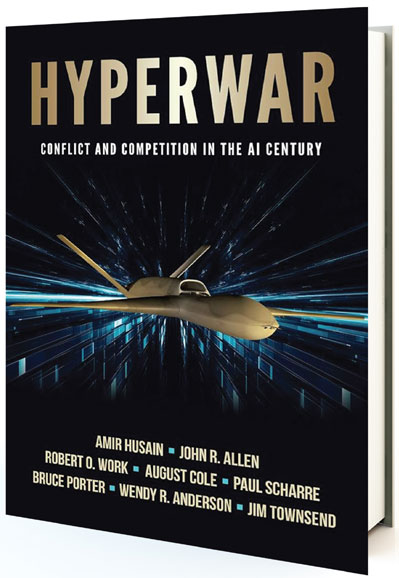Age of Hyperwar
When machines will do the planning, executing, and adapting to the reality of the mission. An extract
Amir Husain and John R. Allen

Broad contours of how this new shift in the way war will be waged already are becoming clear. Technologies such as computer vision aided by machine learning algorithms, artificial intelligence (AI)-powered autonomous decision-making, advanced sensors, miniaturized high-powered computing capacity deployed at the ‘edge,’ high-speed networks, offensive and defensive cyber capabilities, and a host of AI-enabled techniques such as autonomous swarming and cognitive analysis of sensor data will be at the heart of this revolution. The major result of all these capabilities coming together will be an innovation warfare never seen before: the minimization of human decision-making in the vast majority of processes traditionally required to wage war. This minimization likely will alter where the human will be located in the decision-action loop and the human’s specific involvement in decision-making itself. In this coming age of Hyperwar, we will see humans providing broad, high-level inputs while machines do the plannings, executing, and adapting to the reality of the mission, and take on the burden of thousands of individual decisions with no additional input.
Explaining Hyperwar
First, why refer to this AI-fueled, machine-waged conflict as Hyperwar? This is not a new term. In World War II, its use implied the global nature and many concurrent theaters of war. In today’s context, however, Hyperwar may very well be applied globally, but the element of ‘pan-war’ is not its singular defining characteristic. Instead, what makes this new form of warfare unique is the unparalleled speed enabled by automat
Subscribe To Force
Fuel Fearless Journalism with Your Yearly Subscription
SUBSCRIBE NOW
We don’t tell you how to do your job…
But we put the environment in which you do your job in perspective, so that when you step out you do so with the complete picture.







